Big planes amaze people with their size. Some planes stretch longer than Olympic pools, weigh more than tanks, and stand taller than buildings. NASA uses the Super Guppy, while Boeing flies the huge 747 Dreamlifter.
This list shows the 10 biggest airplanes in the world, not ranked by size but ranked by maximum takeoff weight. For each plane, we talk about what makes it special, its unique features, operational history, and significance in the aviation industry.
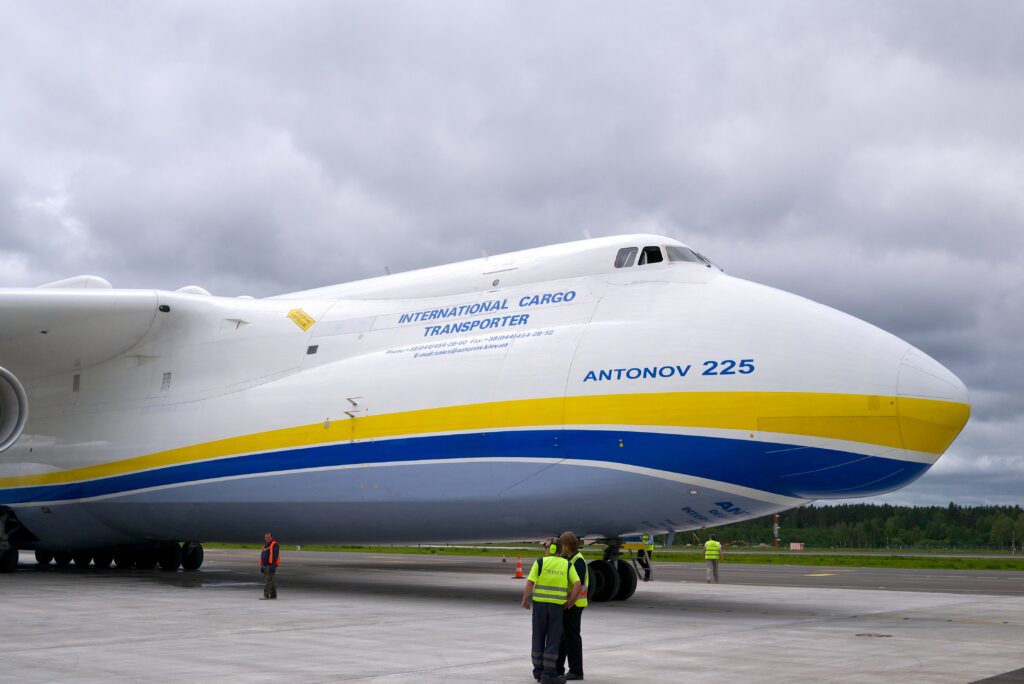
Top 10 Biggest Airplanes in the World
Here’s the list of the top 10 biggest airplanes in the world by maximum takeoff weight.
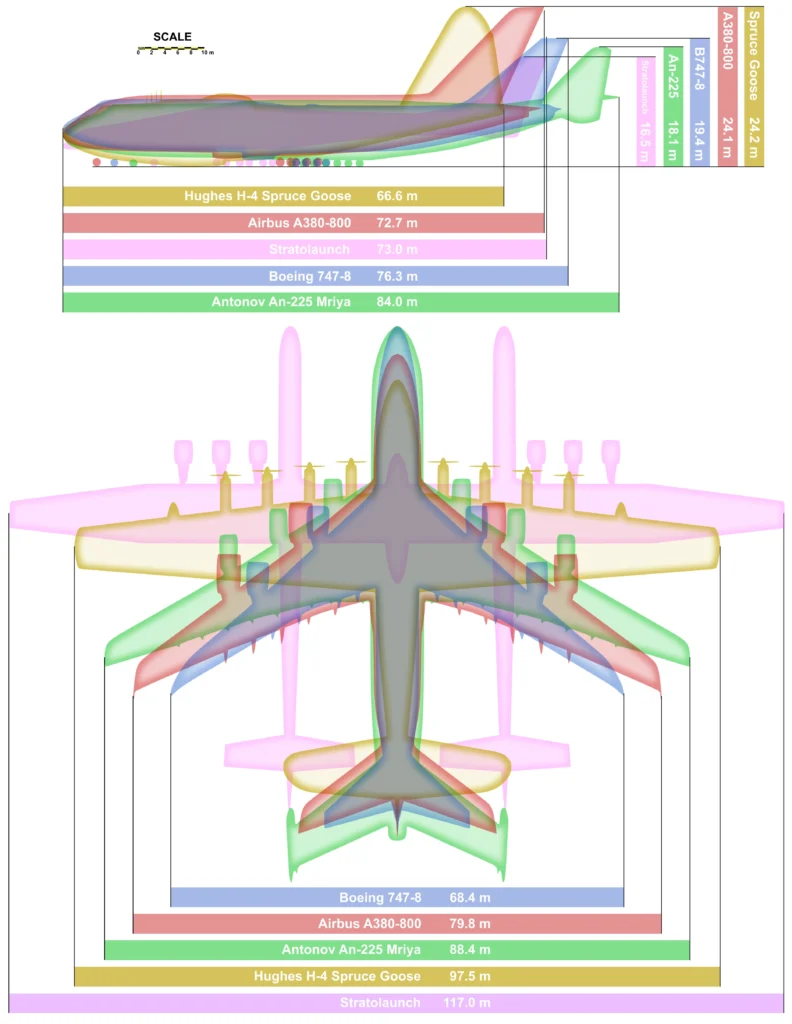
| Sr No. | Airplane | Takeoff Weight (tonnes) | Wingspan (meters) |
|---|---|---|---|
| 1. | Antonov An-225 Mriya | 640 | 88.4 |
| 2. | Scaled Composites Stratolaunch | 590 | 117 |
| 3. | Airbus A380-800 | 575 | 79.75 |
| 4. | Antonov An-124 Ruslan | 455 | 73.3 |
| 5. | Boeing 747-8 | 447 | 68.45 |
| 6. | Lockheed C-5 Galaxy | 381 | 67.9 |
| 7. | Boeing 747-400 Dreamlifter | 396 | 64.4 |
| 8. | Boeing 777X | 351 | 71.75 |
| 9. | Antonov An-22 Antei | 250 | 64.4 |
| 10. | Airbus BelugaXL | 227 | 60.3 |
1. Antonov An-225 Mriya (640 tonnes)

The AN-225 Mriya, first flown on December 21, 1988, was developed to transport the Buran shuttle orbiter and Energiya carrier rocket components. It was also intended as a flying space launch platform in the MAKS system. Mriya can deliver oversized cargo globally, both internally and externally. The AN 225 Mriya is (was) the Biggest Airplane in the world.
Two AN-225s were built, with one completed. Assembly occurred in Kyiv and Tashkent, with parts transported between cities using the An-22 Antaeus.
Key dates:
- October 16, 1986: Requirements Specifications approved for a multi-purpose aerospace system airplane.
- September 27, 2012: Mriya set a Guinness World Record by lifting an art exhibition of 500 paintings to 10,150 meters.
- 2016: AN-225 transported a 182-ton cargo (155-ton turbine in a 27-ton casing) from Brazil to Chile.
The AN-225’s development was part of a larger aerospace initiative, including the Buran orbiter and Energiya carrier, as mandated by the Soviet government. Its versatility in cargo transport and potential for space launch operations highlight its significance in aviation history.
- Maximum Takeoff Weight: 640 Tonnes
- Wingspan: 88.4 Meters
- Maximum Speed: 800 km/h
- Range: 15,400 km
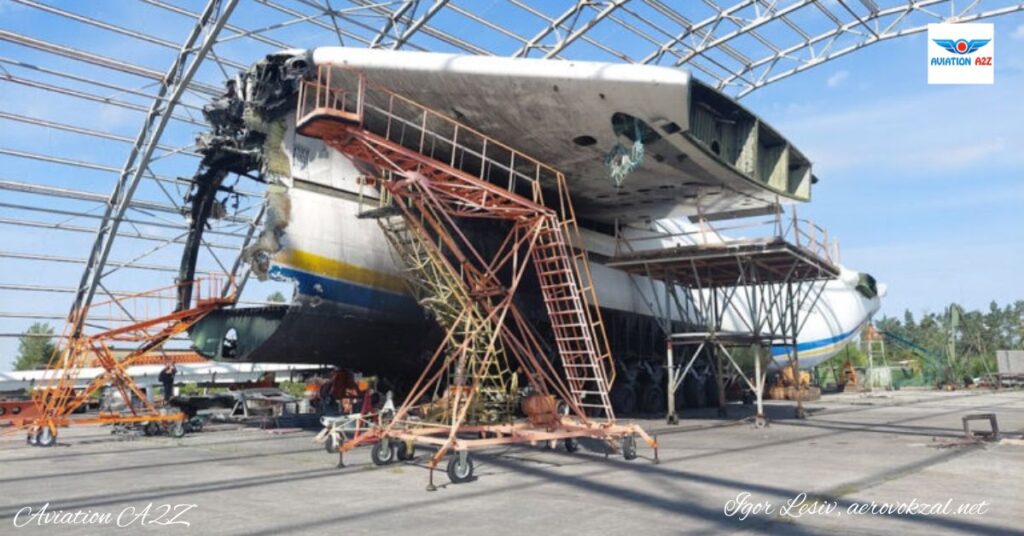
Destroyed in Russia-Ukraine War
The world’s largest aircraft, the Antonov An-225 Mriya, was destroyed in February 2022. Russian forces damaged the six-engine freighter during their invasion of Ukraine. The plane was undergoing maintenance at Antonov’s Gostomel facility near Kyiv when the attack occurred.
On February 27th, the An-225 suffered significant damage during an airport battle. Photos released days after the incident showed extensive damage to the 300-ton aircraft. The forward fuselage was severely burned, with other areas also impacted. New images, taken 18 months after the incident, reveal the current state of the Mriya (Dream) aircraft.

These photos show how the once-mighty plane has changed since its destruction. The loss of the An-225 dealt a blow to the global aviation community.
But, Ukrainian President Volodymyr Zelensky supports completing a second An-225 aircraft. The project faces challenges due to its $800 million price tag. This cost raises doubts about the project’s feasibility.
The new estimate is significantly lower than the initial $3 billion quoted by Ukroboronprom for restoring the original Mriya. Ukroboronprom, a Ukrainian defense firm, first proposed rebuilding the destroyed aircraft.
2. Scaled Composites Stratolaunch (590 tonnes)

The Scaled Composites Model 351 Stratolaunch, also known as Roc, is an aircraft designed for air-launch-to-orbit rockets and hypersonic flight testing. Announced in 2011 and first flown in 2019, it features a twin-fuselage design and the world’s longest wingspan at 385 feet.
Scaled Composites Stratolaunch is the 2nd biggest airplane in the world. After a brief halt in operations and ownership change in 2019, Stratolaunch shifted focus to high-speed flight test services. As of February 2024, the aircraft has completed thirteen flights.
Development milestones include its rollout in 2017, followed by extensive ground testing and taxi tests. The first flight occurred on April 13, 2019. Subsequent flights have focused on expanding capabilities and testing new components.
Stratolaunch is developing the Talon-A, a reusable hypersonic vehicle designed to reach Mach 5-7. The company aims to launch multiple Talon-A vehicles simultaneously in the future.
Recent notable flights include the second flight in April 2021, a third flight in January 2022 reaching over 23,490 feet, and the eighth flight in October 2022, which marked the first captive carry flight with the Talon-A separation test vehicle. The ninth flight in January 2023 achieved a record duration of over six hours, while the tenth flight in April 2023 signaled the start of routine operations.
- Maximum Takeoff Weight: 590 Tonnes
- Wingspan: 117 Meters
- Maximum Speed: 850 km/h
- Range: 1,900 km
3. Airbus A380-800 (569 tonnes)

The Airbus A380 is the biggest passenger airplane in the world and the only double-decker aircraft. It was developed to challenge Boeing’s 747 dominance. It was announced in 1990 and the project launched in 2000 with a €9.5 billion budget. The prototype test flight was conducted in 2005 and received its certification in 2006.
A380 components are manufactured globally and assembled in Toulouse, France. A specialized transportation network, including custom ships and modified roads, was developed to move large structural parts.
By 2009, over 1.5 million passengers had flown on A380s. Major airlines like Singapore Airlines (SQ), Air France (AF), and Lufthansa (LH) integrated A380s into their fleets. By 2015, over 100 million passengers had traveled on A380s, with an impressive 98.5% availability rate.
Emirates (EK), the largest A380-800 customer, received the final delivery in December 2021, marking the end of A380-800 production. The airline’s collaboration with Airbus led to numerous innovations, including first-class showers and premium economy cabins.
By December 2021, the global A380 fleet had transported over 300 million passengers to more than 70 destinations, completing over 800,000 flights with 99% operational reliability and no hull-loss accidents. The Asia-Pacific region accounts for over 50% of A380 capacity, with 15% on regional Asian flights.
- Maximum Takeoff Weight: 575 Tonnes
- Wingspan: 79.75 Meters
- Maximum Speed: 903 km/h
- Range: 14,800 km
4. Antonov An-124 Ruslan (455 tonnes)
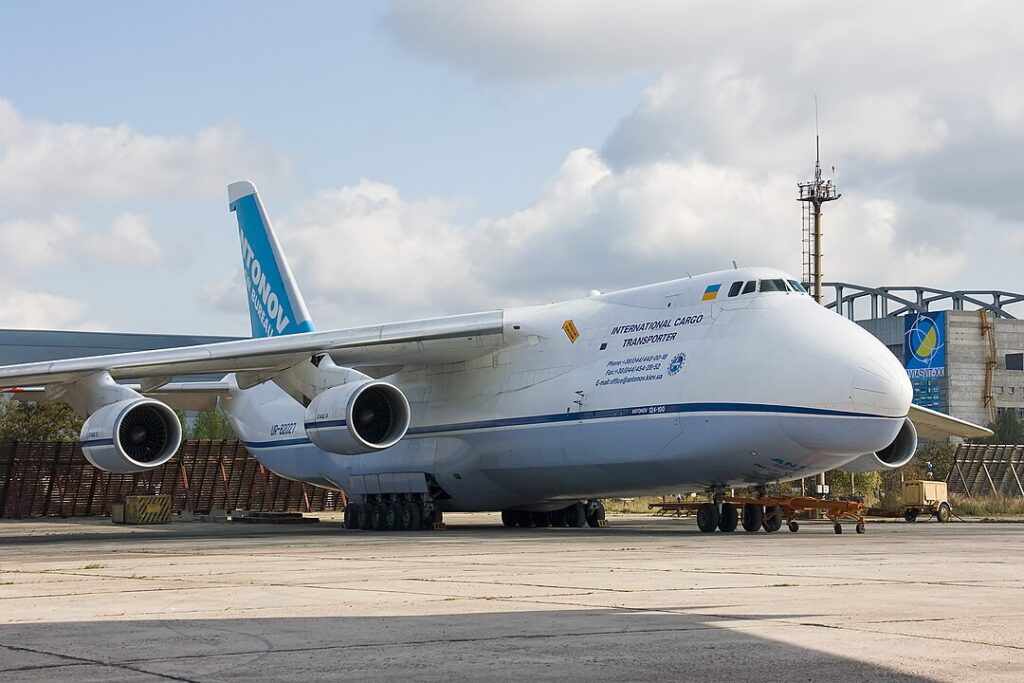
The Antonov An-124 Ruslan, designed in the 1980s Soviet Union, is the world’s largest aircraft by maximum takeoff weight. Development began in 1971 to address heavy airlift shortages in Soviet military aviation. Assembly started in 1979, with the maiden flight on December 24, 1982. The aircraft debuted at the 1985 Paris Air Show.
Germany initiated leasing An-124s for NATO strategic airlift needs in the 2000s. Under the SALIS program, six An-124-100s serve 18 NATO countries, with two based at Leipzig/Halle airport. The aircraft proved valuable in Iraq and Afghanistan operations.
United Launch Alliance (ULA) uses An-124s to transport Atlas V launch vehicles and Centaur upper stages. Space Systems Loral and SpaceX also contract An-124s for satellite and component transportation.
By 2013, the An-124 had visited 768 airports in over 100 countries. As of late 2020, three civil operators remained: Antonov Airlines (7 aircraft), Volga-Dnepr Airlines (12), and Maximus Air Cargo (1).
In November 2020, Volga-Dnepr temporarily grounded its fleet for engine inspections following a failure incident. The first Volga-Dnepr An-124-100 returned to service on December 29, 2020.
- Maximum Takeoff Weight: 455 Tonnes
- Wingspan: 73.3 Meters
- Maximum Speed: 865 km/h
- Range: 15,700 km
5. Boeing 747-8 (447 tonnes)
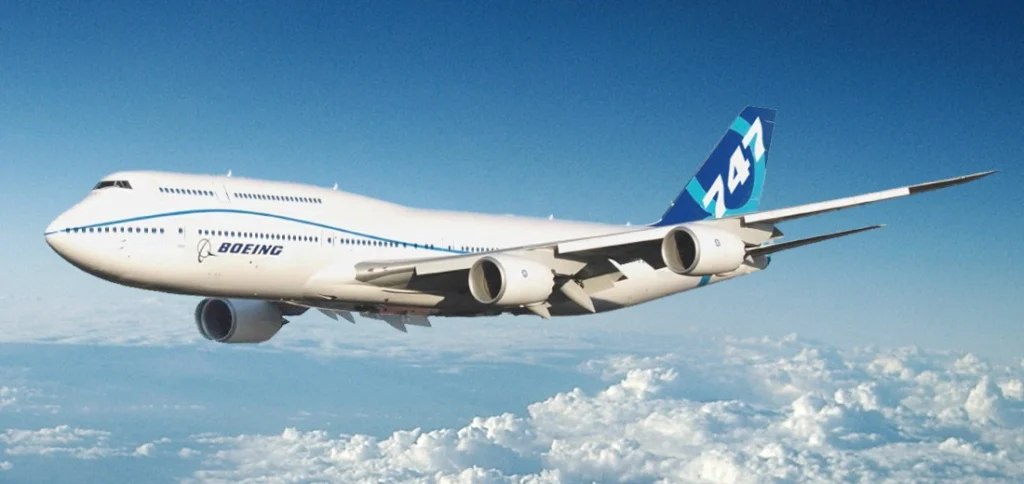
The Boeing 747-8 is the largest variant of the 747 family and Boeing’s largest aircraft. It was launched in 2005 and developed as a response to the Airbus A380. The freighter version first flew in February 2010, followed by the passenger version in March 2011.
Boeing faced several challenges during development, including buffet problems, potential fuselage defects, and structural issues. These setbacks slowed flight testing and consumed most of the development schedule margin.
The 747-8 entered commercial service in 2011 for cargo and in 2012 for passengers. By July 2018, 110 aircraft were in service with various airlines, primarily for cargo operations. Major operators included Lufthansa, Korean Air (KE), and Cargolux (CV).
Several VIP configurations were ordered by state leaders and governments, including Qatar, Kuwait, Oman, Brunei, Morocco, Turkey, Saudi Arabia, and Egypt. These special versions serve as executive transports for heads of state and other high-ranking officials.
The 747-8’s development was part of Boeing’s strategy to compete in the very large aircraft market. It built upon the success of previous 747 models while incorporating new technologies and design improvements. Despite facing competition from the Airbus A380 and changing market dynamics, the 747-8 found a niche, particularly in the cargo sector.
- Maximum Takeoff Weight: 447 Tonnes
- Wingspan: 68.45 Meters
- Maximum Speed: 1061.9 km/h
- Range: 13,650 km
6. Lockheed C-5 Galaxy (381 tonnes)
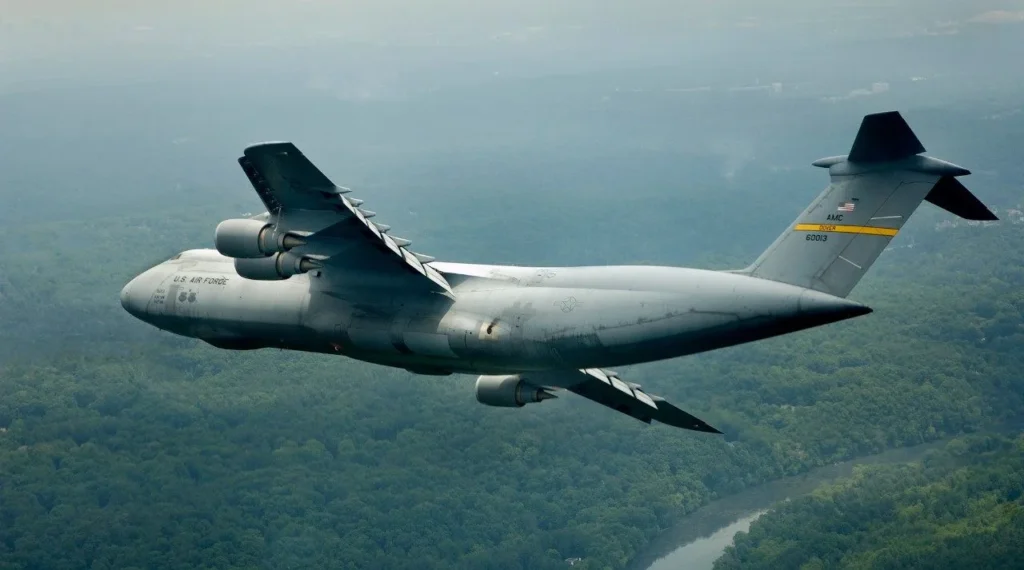
The Lockheed C-5 Galaxy is the largest military transport aircraft in the world designed for the United States Air Force. It was developed in the 1960s to replace the Douglas C-133 Cargomaster and complement the C-141 Starlifter. It can carry outsized and oversized loads, including all air-certifiable cargo. The C-5 features a high-wing design, four turbofan engines, and a distinctive T-tail.
Its cargo hold is longer than the Wright brothers’ first powered flight. The aircraft can accommodate up to Thirty-Six 463L master pallets or a mix of vehicles and palletized cargo. It can transport different types of military equipment such as tanks and helicopters.
The C-5 made its first flight in 1968 and entered service in 1969. The aircraft has also been employed for humanitarian missions and unusual tasks, such as transporting disassembled stealth fighters and testing air-launched ballistic missiles.
The C-5 has undergone several upgrades over the years to solve reliability issues and improve performance. The C-5M Super Galaxy modernization program, which includes avionics upgrades and re-engining, aims to increase the mission-capable rate and extend the aircraft’s service life.
In 2009, a C-5M set 41 new records which includes payload-to-altitude and time-to-climb achievements. Despite its impressive capabilities, the C-5 has faced maintenance challenges, with periodic stand-downs for inspections and repairs.
As of 2018, the last of 52 C-5Ms was delivered to Air Mobility Command, marking a significant milestone in the modernization of the USAF’s strategic airlift capability.
- Maximum Takeoff Weight: 381 Tonnes
- Wingspan: 67.9 Meters
- Maximum Speed: 856 km/h
- Range: 8,900 km
7. Boeing 747-400 Dreamlifter (396 tonnes)
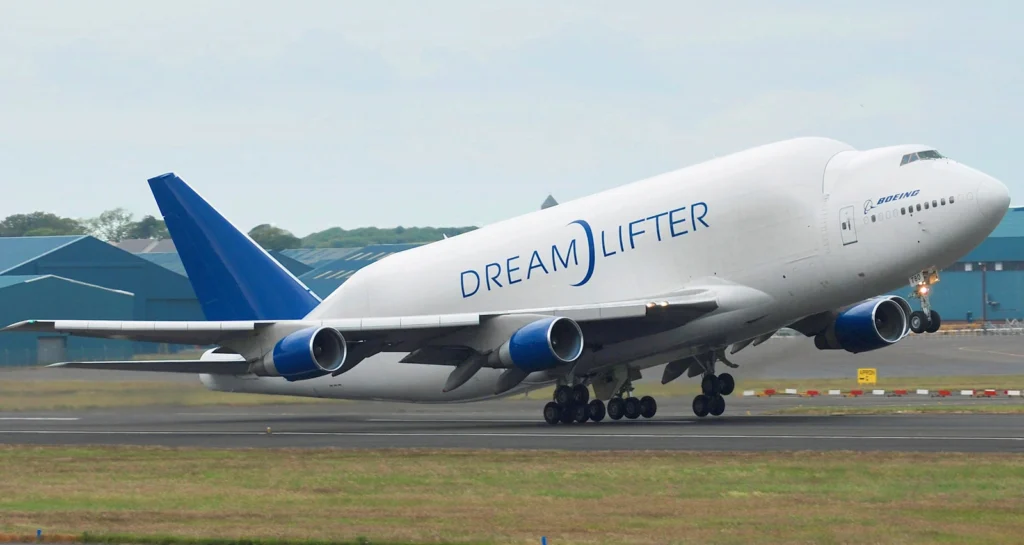
The Boeing Dreamlifter is a modified 747-400 cargo aircraft designed to transport large Boeing 787 Dreamliner components. It was announced in 2003, that it could hold three times the volume of a standard 747-400F. The aircraft features a bulging fuselage and swing tail, designed in collaboration with international partners.
Evergreen Aviation Technologies Corporation in Taiwan carried out the modifications on four repurchased 747-400s. The first Dreamlifter rolled out in August 2006 and completed its first test flight on September 16, 2006. The aircraft uses the DBL-100 which is the world’s longest cargo loader to load 787 dreamliner parts.
Flight testing began in September 2006, with the second aircraft joining in February 2007. The Dreamlifter significantly reduced delivery times for 787 wings from Japan, from 30 days to just over 8 hours. Initially operated by Evergreen International Airlines, Atlas Air took over operations in 2010.
Boeing named the aircraft “Dreamlifter” in December 2006 and unveiled a standard livery. After addressing vibration issues by removing winglets, the Dreamlifter received FAA certification in June 2007 following extensive flight and ground testing.
All four Dreamlifters were operational by February 2010. The aircraft has since been used not only for transporting 787 components but also for humanitarian efforts, such as delivering face masks during the COVID-19 pandemic in 2020.
The Dreamlifter’s unique appearance has drawn comparisons to other unusual aircraft designs, but its practicality in supporting Boeing’s global supply chain for the 787 Dreamliner program has proven invaluable.
- Maximum Takeoff Weight: 396 Tonnes
- Wingspan: 64.4 Meters
- Maximum Speed: 908 km/h
- Range: 13,450 km
8. Boeing 777X (365 tonnes)
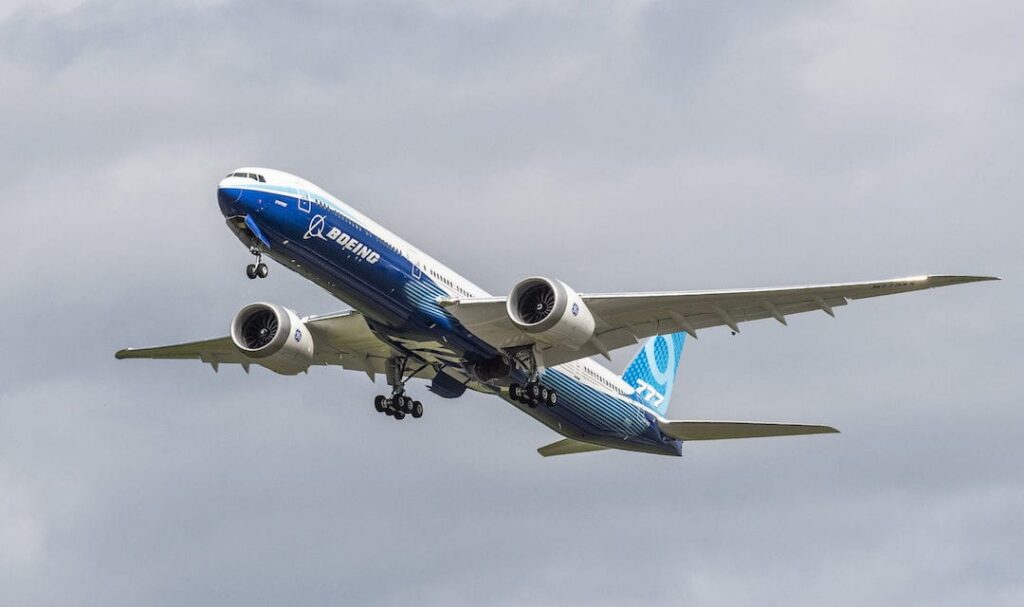
The Boeing 777X is the latest series of Boeing’s wide-body, twin-engine jetliner family. It was launched in 2013. It features new GE9X engines, composite wings with folding wingtips, increased cabin width, and technologies from the Boeing 787. The program offers two main variants: the 777-8 and 777-9, providing seating for 426 passengers and a range of over 13,492 km.
Development of the Boeing 777X began in 2010, with assembly planned at the Boeing Everett Factory, USA. As of April 2024, there are 481 total orders from various airlines and private customers. The 777-9 first test flight was conducted in January 2020. But deliveries have been delayed multiple times due to COVID-19, It is now expected to deliver in 2025.
The 777X is designed to compete with the Airbus A350 XWB, offering improved fuel efficiency and operating costs. The program faced several challenges and delays, including design refinements and market adjustments. Lufthansa became the launch customer to order it in 2013, followed by significant orders from Emirates. Air India (AI) is the latest customer, who has placed an order for 10 777X.
Boeing has developed multiple variants of the 777X.
- Boeing 777-9
- Boeing 777-8
- BBJ 777X
- Boeing 777-8F
- Boeing 777-10X
The 777-9 is the largest, while the 777-8 is a shortened version with extended range. Boeing also launched business jet variants and a freighter version based on the 777-8 airframe. A potential 777-10X stretch has been proposed to compete with the Airbus A380.
The 777X program represents Boeing’s efforts to maintain its position in the long-range, wide-body market while addressing evolving customer needs and environmental concerns. Despite delays, the aircraft’s advanced features and efficiency improvements make it a significant player in the future of commercial aviation.
- Maximum Takeoff Weight: 365 Tonnes
- Wingspan: 71.75 Meters
- Maximum Speed: 930 km/h
- Range: 8,170 km
9. Antonov An-22 Antei (250 tonnes)

The Antonov An-22 Antei is a heavy military transport aircraft designed in the Soviet Union. It’s the world’s largest turboprop-powered airplane featuring four engines with contra-rotating propellers.
It was developed in the 1950s to supplement existing transport aircraft. The An-22 first took off in February 1965 and debuted at the Paris Air Show the same year. Antonov An-22 is the 9th Biggest Airplane in the world.
The An-22’s design allows it to operate from unpaved, short airstrips, crucial for airborne troop deployment. It can carry 4 BMD-1 tanks, significantly expanding the Soviet Airborne Forces’ capabilities. The aircraft has a high-mounted wing, a pressurized forward fuselage for crew and passengers, and a large cargo space with a volume of 639 m³. Initially, the airplane was built for the Soviet Air Force and Aeroflot. The An-22 has been used extensively in military operations.
By the mid-1990s, about 45 An-22s remained in service. Out of which most of the airplane was with the Russian Air Force. As of December 2018, six An-22s were still operational with the 76th Military Transport Air Squadron at Tver, with plans to keep them in service until 2033.
Additionally, Antonov Airlines operates a single An-22, though its status may have been affected by the 2022 Russian military action in Ukraine.
Despite being gradually replaced by the larger turbofan-powered Antonov An-124, the An-22 Antei remains a significant part of Russia’s military transport capabilities.
- Maximum Takeoff Weight: 250 Tonnes
- Wingspan: 64.4 Meters
- Maximum Speed: 580 km/h
- Range: 5,225 km
10. Airbus BelugaXL (227 tonnes)
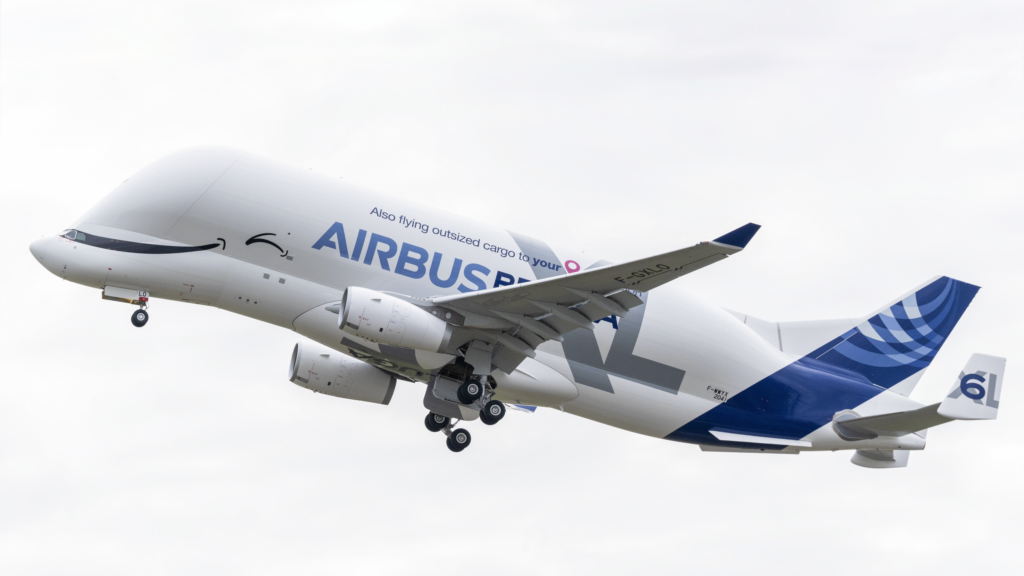
The Airbus BelugaXL is a large transport aircraft based on the A330-200F. It is designed to replace the original BelugaST for transporting oversized aircraft components. Airbus BelugaXL is the 10th biggest airplane in the world.
Launched in 2014 with a €1 billion budget, the program aimed to build five aircraft to meet increased production demands.
The BelugaXL’s development involved assembling various sections from different Airbus facilities. Key milestones included the delivery of the nose section in May 2017 and the cargo door in September 2017. The first aircraft rolled off the assembly line in January 2018, followed by extensive ground testing and simulations.
The BelugaXL made its maiden flight on July 19, 2018, from Blagnac, Toulouse. It received type certification on November 13, 2019, and entered service with Airbus Transport on January 9, 2020. The flight test program lasts 600 hours.
Compared to its predecessor, the BelugaXL offers 30% more capacity, capable of carrying two A350 XWB wings instead of one. It features a fuselage 6.9 meters longer and 1.7 meters wider than the BelugaST, with a 6-tonne heavier payload capacity.
Airbus have all six BelugaXL freighters operational by the end of 2023, gradually phasing out the older A300-600STs from 2021. This new fleet will significantly enhance Airbus’s ability to transport large aircraft components, supporting increased production across its European facilities.
- Maximum Takeoff Weight: 227 Tonnes
- Wingspan: 60.3 Meters
- Maximum Speed: 737 km/h
- Range: 4,000 km
Well, this concludes our list of 10 Largest or Biggest or Heaviest Airplanes or Planes or Aircraft in the World.
Which one is your favorite aircraft and why? Let us know in the comment section below. Make sure to follow us on social media platforms to stay updated.
Join us on Telegram Group for the Latest Aviation Updates. Subsequently, follow us on Google News.
The post Top 10 Biggest Airplanes in the World (Updated) appeared first on Aviation A2Z.

